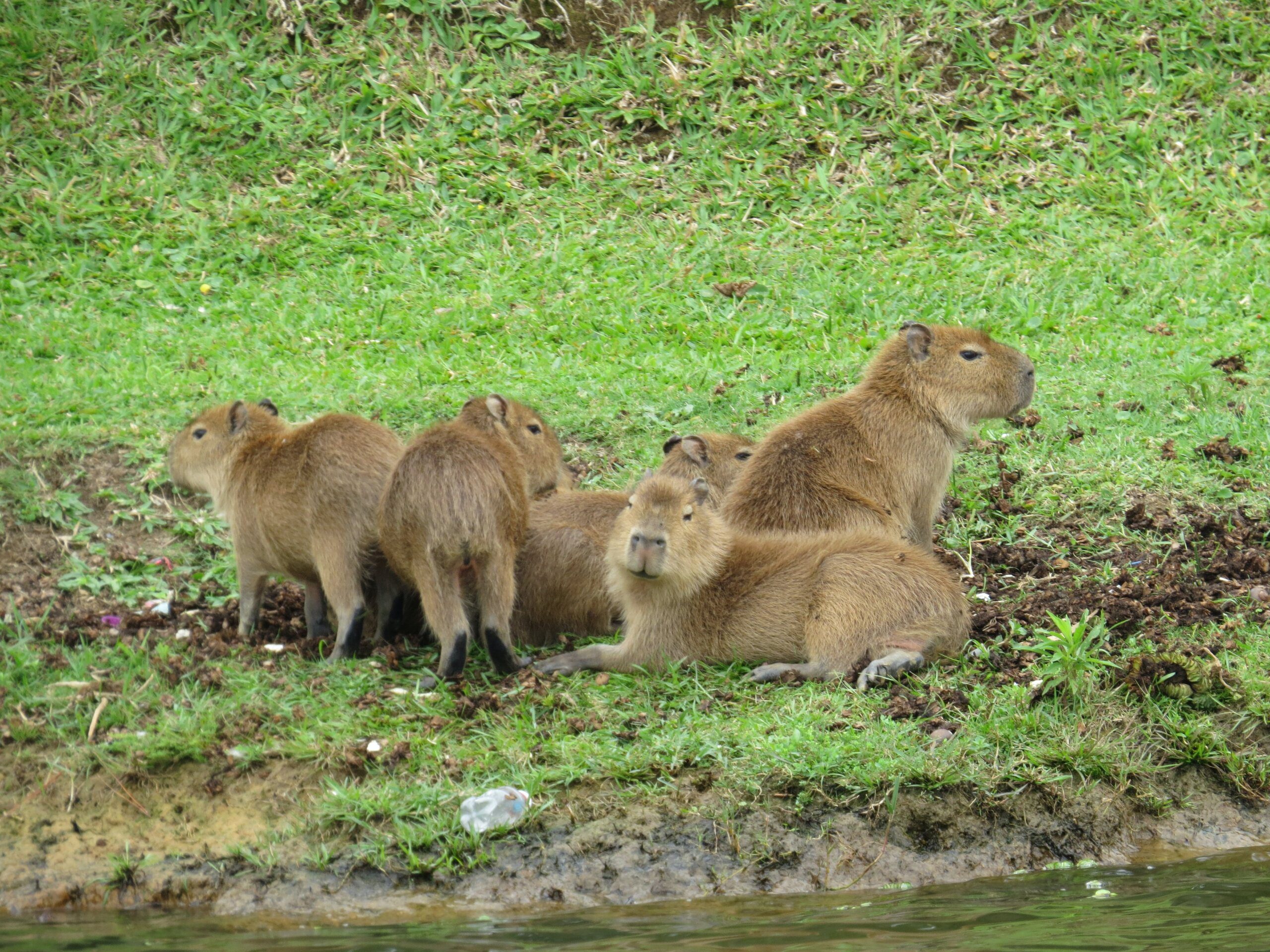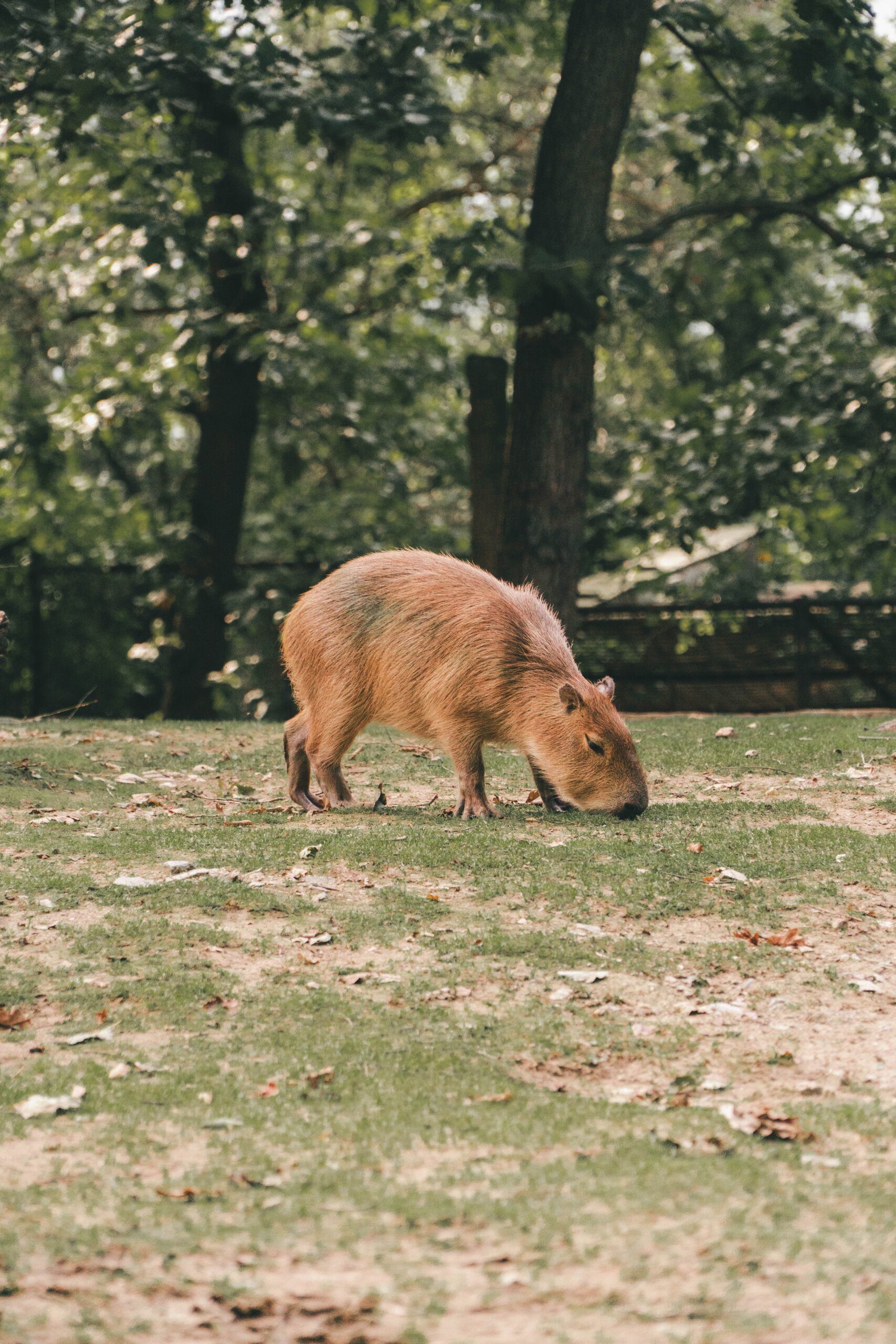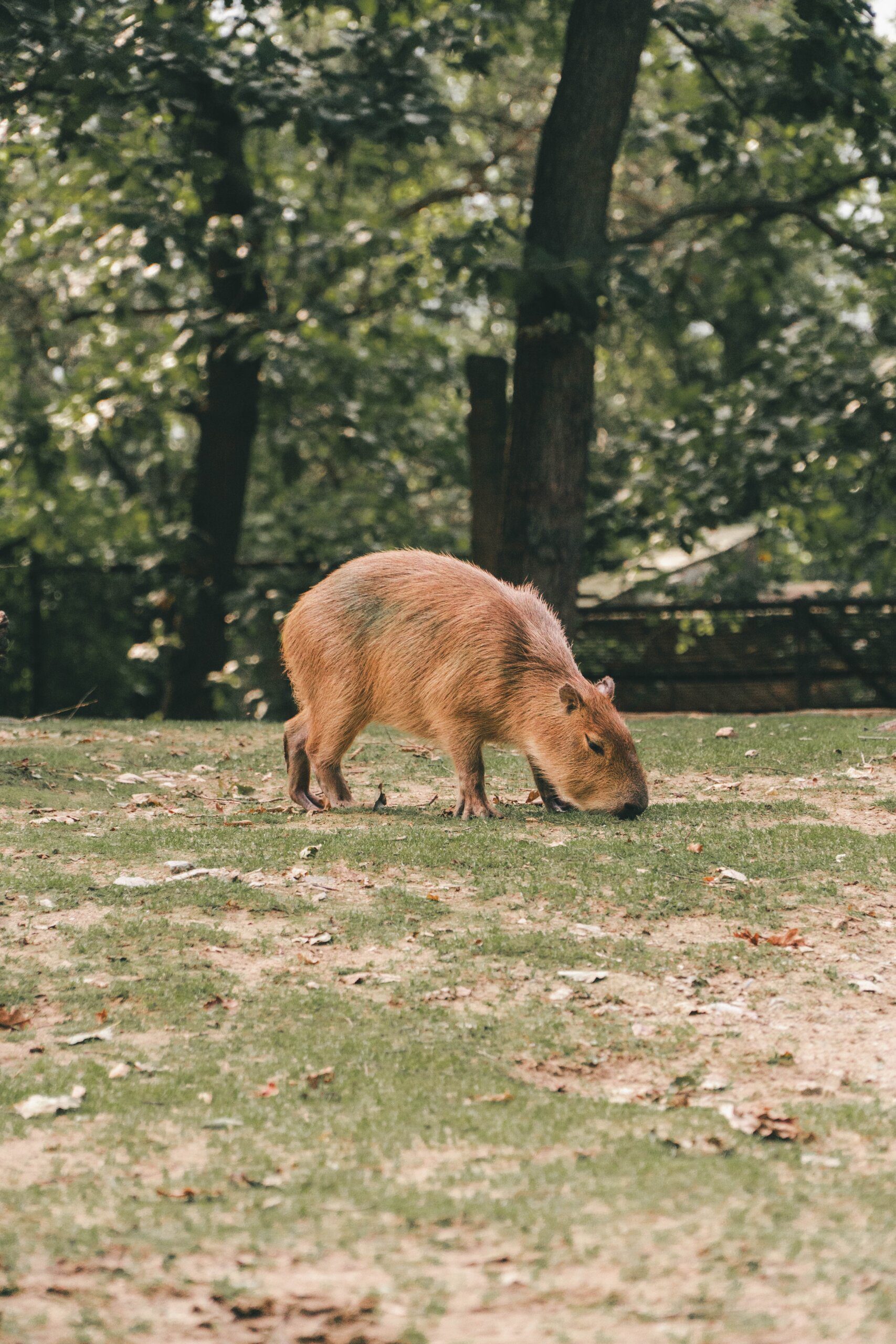Did you know that the capybara, native to South America, is the world’s largest rodent? These fascinating creatures have captured the curiosity of many, and in this article, we will explore ten intriguing capybara facts that will both educate and amaze you. From their social nature and unique physical adaptations to their surprising swimming abilities, there is so much to discover about these charismatic animals. So, get ready to dive into the captivating world of capybaras and uncover the secrets behind these incredible creatures.

Physical Description
Size
The capybara is the largest rodent in the world and can reach a size comparable to a medium-sized dog. On average, capybaras measure around 3.5 feet in length and can stand about 2 feet tall at the shoulder. These impressive creatures can weigh anywhere between 77 and 146 pounds, with males being slightly larger and heavier than females.
Appearance
Capybaras have a unique appearance, resembling a mix between a guinea pig and a pig. They have a stout body covered in short, coarse hair that can range in color from reddish-brown to grayish-brown. Their heads are round with small ears and eyes positioned atop the head, allowing them to keep a watchful eye on their surroundings even while partially submerged in water. Capybaras also possess long, sturdy legs and partially webbed feet, which aid them in both land and water locomotion.
Habitat
Geographical Distribution
Capybaras are native to South America and can be found in a variety of countries, including Brazil, Colombia, Venezuela, and Argentina. They are particularly prevalent in the wetlands and savannas of the continent, where they can access both water and abundant vegetation.
Preferred Habitats
These remarkable creatures are highly adaptable and can thrive in various habitats, as long as they have access to water. Capybaras are commonly seen in swamps, marshes, and riversides, where they can graze on aquatic plants and take refuge from predators. They are known for their semiaquatic lifestyle and have a unique ability to blend in seamlessly with their surroundings, thanks to their excellent camouflage and the dense vegetation typically found in their preferred habitats.

Social Behavior
Family Structure
Capybaras are highly social animals and are often found living in large groups called herds. These herds typically consist of about 10 to 40 individuals, although larger groups of more than 100 have been observed. Within the herd, a dominant male, known as the alpha male, presides over the group and protects its members from potential threats.
Communication
To maintain social cohesion within the herd, capybaras rely on various forms of communication. They communicate using a combination of vocalizations, body language, and scent marking. Capybaras produce a variety of sounds, including barks, whistles, and purrs, to convey different messages to their group members. They also engage in mutual grooming behaviors, which help strengthen social bonds among individuals and maintain a harmonious atmosphere within the herd.
Diet
Herbivorous Diet
Capybaras are herbivores, meaning they exclusively consume plant material. Their diet primarily consists of grasses, aquatic plants, and various types of vegetation found in their habitat. They have a unique ability to digest plant fibers efficiently, as their hindgut houses bacteria that assist in breaking down tough plant material.
Digestive System
The digestive system of the capybara is specially adapted to extract nutrients from their plant-based diet. They possess a large cecum, a part of the digestive tract that acts as a fermentation chamber. This cecum contains beneficial bacteria that aid in breaking down cellulose, allowing capybaras to extract vital nutrients from the plants they eat. This efficient digestive system is crucial for their survival as herbivores.

Natural Predators
Predatory Threats
Like any other animal, capybaras have natural predators that pose a threat to their survival. Their primary predatory threats include large cats such as jaguars and pumas, as well as caimans and anacondas found in their aquatic habitats. Additionally, young capybaras may be targeted by birds of prey, such as eagles and owls.
Anti-predator Adaptations
To counteract these predatory threats, capybaras have developed a few adaptations that aid in their survival. They have keen senses, particularly good hearing and eyesight, allowing them to detect potential predators from a distance. Capybaras also have a unique alarm call, a loud “bark” that alerts other members of the herd of imminent danger. Additionally, their semi-aquatic lifestyle enables them to seek refuge in water bodies, where they can quickly escape from approaching predators.
Adaptations for Aquatic Life
Semi-aquatic Lifestyle
Capybaras have remarkable adaptations that allow them to flourish in their semi-aquatic lifestyle. Their partially webbed feet facilitate efficient movement both on land and in water. They are excellent swimmers and can even remain submerged for several minutes at a time. Capybaras also possess a specialized gland on their noses called the nasal gland, which helps them regulate body temperature in water and prevents water from entering their respiratory system.
Swimming Abilities
With their streamlined bodies and powerful limbs, capybaras are well-equipped for swimming. Their webbed feet enable efficient propulsion through the water, while their sturdy body shape reduces resistance, allowing them to glide smoothly through rivers, lakes, and marshes. Their long legs can be used for both paddling and walking underwater, further enhancing their swimming abilities. Capybaras are equally agile in both terrestrial and aquatic environments.
Breeding and Reproduction
Mating Rituals
Capybaras engage in complex mating rituals to ensure successful reproduction. During the breeding season, which typically occurs in the rainy season, males compete for dominance by engaging in ritualized combat. These encounters involve baring their teeth, pushing against each other, and emitting vocalizations. The alpha male usually secures mating privileges with multiple females within the herd.
Gestation and Birth
After a gestation period of approximately 150 days, female capybaras give birth to litters of usually four to eight offspring, known as pups. The newborn pups are precocial, meaning they are relatively independent and fully furred at birth. They quickly develop the ability to walk and swim within hours. The mother capybara provides care and protection to her young, nursing them until they are able to transition to a herbivorous diet.
Lifespan and Mortality
Average Lifespan
Capybaras have a relatively long lifespan compared to other rodents, with an average lifespan ranging from 8 to 10 years in the wild. However, capybaras in captivity have been known to live up to 12 years or even longer, benefiting from a controlled environment, proper nutrition, and veterinary care.
Causes of Mortality
Various factors can contribute to the mortality of capybaras in the wild. Predation by natural predators, disease, and habitat loss due to human encroachment are among the primary causes. Additionally, hunting for meat and hide, particularly in areas where capybaras are not protected, can further impact their populations. Climate change, pollution, and competition for resources with other animals can also affect capybara mortality rates.
Conservation Status
IUCN Status
The capybara is currently listed as a species of “Least Concern” by the International Union for Conservation of Nature (IUCN). This status signifies that capybaras are not currently facing imminent threats of extinction. However, it is essential to continue monitoring their populations and maintain efforts to protect their habitats to ensure their long-term survival.
Threats to Population
While capybaras are not facing immediate endangerment, certain threats do affect their populations. Habitat destruction and fragmentation due to deforestation, agriculture, and urbanization can limit their available space and food resources. Additionally, hunting for bushmeat and their valuable hides, especially in areas with poor enforcement of regulations, can put pressure on capybara populations. Continued conservation efforts and the establishment of protected areas are crucial for maintaining healthy and sustainable capybara populations.
Cultural Significance
In Native Indigenous Cultures
Capybaras hold significant cultural importance in many indigenous communities across South America. They are often seen as symbols of abundance, harmony, and adaptability. Some indigenous tribes believe that capybaras possess healing properties and spiritual strength. Additionally, capybaras are sometimes used in traditional ceremonies and rituals, representing the connection between humans and nature.
Capybara as Pets
Capybaras have gained popularity as exotic pets in recent years. Due to their sociable nature and their ability to form bonds with humans, some people have opted to keep them as pets. However, it is important to remember that capybaras have specific care requirements and necessitate large outdoor spaces and access to water. Before considering a capybara as a pet, potential owners should thoroughly research capybara care, legal requirements, and ensure they can provide the appropriate environment and companionship. It is important to prioritize the welfare of these extraordinary animals and consult with experienced professionals to ensure proper care and wellbeing.



